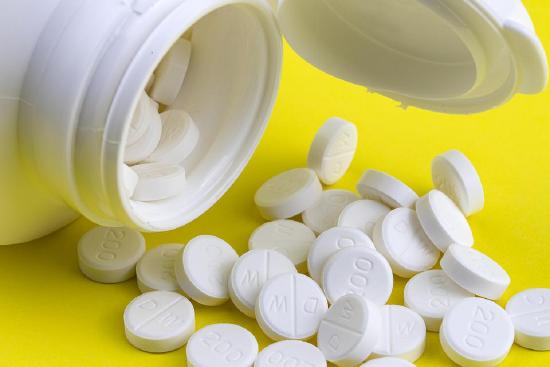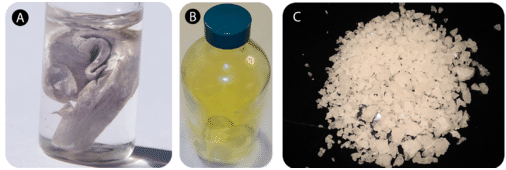11.2: Elements, molecules, and compounds
- Page ID
- 476574
\( \newcommand{\vecs}[1]{\overset { \scriptstyle \rightharpoonup} {\mathbf{#1}} } \)
\( \newcommand{\vecd}[1]{\overset{-\!-\!\rightharpoonup}{\vphantom{a}\smash {#1}}} \)
\( \newcommand{\id}{\mathrm{id}}\) \( \newcommand{\Span}{\mathrm{span}}\)
( \newcommand{\kernel}{\mathrm{null}\,}\) \( \newcommand{\range}{\mathrm{range}\,}\)
\( \newcommand{\RealPart}{\mathrm{Re}}\) \( \newcommand{\ImaginaryPart}{\mathrm{Im}}\)
\( \newcommand{\Argument}{\mathrm{Arg}}\) \( \newcommand{\norm}[1]{\| #1 \|}\)
\( \newcommand{\inner}[2]{\langle #1, #2 \rangle}\)
\( \newcommand{\Span}{\mathrm{span}}\)
\( \newcommand{\id}{\mathrm{id}}\)
\( \newcommand{\Span}{\mathrm{span}}\)
\( \newcommand{\kernel}{\mathrm{null}\,}\)
\( \newcommand{\range}{\mathrm{range}\,}\)
\( \newcommand{\RealPart}{\mathrm{Re}}\)
\( \newcommand{\ImaginaryPart}{\mathrm{Im}}\)
\( \newcommand{\Argument}{\mathrm{Arg}}\)
\( \newcommand{\norm}[1]{\| #1 \|}\)
\( \newcommand{\inner}[2]{\langle #1, #2 \rangle}\)
\( \newcommand{\Span}{\mathrm{span}}\) \( \newcommand{\AA}{\unicode[.8,0]{x212B}}\)
\( \newcommand{\vectorA}[1]{\vec{#1}} % arrow\)
\( \newcommand{\vectorAt}[1]{\vec{\text{#1}}} % arrow\)
\( \newcommand{\vectorB}[1]{\overset { \scriptstyle \rightharpoonup} {\mathbf{#1}} } \)
\( \newcommand{\vectorC}[1]{\textbf{#1}} \)
\( \newcommand{\vectorD}[1]{\overrightarrow{#1}} \)
\( \newcommand{\vectorDt}[1]{\overrightarrow{\text{#1}}} \)
\( \newcommand{\vectE}[1]{\overset{-\!-\!\rightharpoonup}{\vphantom{a}\smash{\mathbf {#1}}}} \)
\( \newcommand{\vecs}[1]{\overset { \scriptstyle \rightharpoonup} {\mathbf{#1}} } \)
\( \newcommand{\vecd}[1]{\overset{-\!-\!\rightharpoonup}{\vphantom{a}\smash {#1}}} \)
\(\newcommand{\avec}{\mathbf a}\) \(\newcommand{\bvec}{\mathbf b}\) \(\newcommand{\cvec}{\mathbf c}\) \(\newcommand{\dvec}{\mathbf d}\) \(\newcommand{\dtil}{\widetilde{\mathbf d}}\) \(\newcommand{\evec}{\mathbf e}\) \(\newcommand{\fvec}{\mathbf f}\) \(\newcommand{\nvec}{\mathbf n}\) \(\newcommand{\pvec}{\mathbf p}\) \(\newcommand{\qvec}{\mathbf q}\) \(\newcommand{\svec}{\mathbf s}\) \(\newcommand{\tvec}{\mathbf t}\) \(\newcommand{\uvec}{\mathbf u}\) \(\newcommand{\vvec}{\mathbf v}\) \(\newcommand{\wvec}{\mathbf w}\) \(\newcommand{\xvec}{\mathbf x}\) \(\newcommand{\yvec}{\mathbf y}\) \(\newcommand{\zvec}{\mathbf z}\) \(\newcommand{\rvec}{\mathbf r}\) \(\newcommand{\mvec}{\mathbf m}\) \(\newcommand{\zerovec}{\mathbf 0}\) \(\newcommand{\onevec}{\mathbf 1}\) \(\newcommand{\real}{\mathbb R}\) \(\newcommand{\twovec}[2]{\left[\begin{array}{r}#1 \\ #2 \end{array}\right]}\) \(\newcommand{\ctwovec}[2]{\left[\begin{array}{c}#1 \\ #2 \end{array}\right]}\) \(\newcommand{\threevec}[3]{\left[\begin{array}{r}#1 \\ #2 \\ #3 \end{array}\right]}\) \(\newcommand{\cthreevec}[3]{\left[\begin{array}{c}#1 \\ #2 \\ #3 \end{array}\right]}\) \(\newcommand{\fourvec}[4]{\left[\begin{array}{r}#1 \\ #2 \\ #3 \\ #4 \end{array}\right]}\) \(\newcommand{\cfourvec}[4]{\left[\begin{array}{c}#1 \\ #2 \\ #3 \\ #4 \end{array}\right]}\) \(\newcommand{\fivevec}[5]{\left[\begin{array}{r}#1 \\ #2 \\ #3 \\ #4 \\ #5 \\ \end{array}\right]}\) \(\newcommand{\cfivevec}[5]{\left[\begin{array}{c}#1 \\ #2 \\ #3 \\ #4 \\ #5 \\ \end{array}\right]}\) \(\newcommand{\mattwo}[4]{\left[\begin{array}{rr}#1 \amp #2 \\ #3 \amp #4 \\ \end{array}\right]}\) \(\newcommand{\laspan}[1]{\text{Span}\{#1\}}\) \(\newcommand{\bcal}{\cal B}\) \(\newcommand{\ccal}{\cal C}\) \(\newcommand{\scal}{\cal S}\) \(\newcommand{\wcal}{\cal W}\) \(\newcommand{\ecal}{\cal E}\) \(\newcommand{\coords}[2]{\left\{#1\right\}_{#2}}\) \(\newcommand{\gray}[1]{\color{gray}{#1}}\) \(\newcommand{\lgray}[1]{\color{lightgray}{#1}}\) \(\newcommand{\rank}{\operatorname{rank}}\) \(\newcommand{\row}{\text{Row}}\) \(\newcommand{\col}{\text{Col}}\) \(\renewcommand{\row}{\text{Row}}\) \(\newcommand{\nul}{\text{Nul}}\) \(\newcommand{\var}{\text{Var}}\) \(\newcommand{\corr}{\text{corr}}\) \(\newcommand{\len}[1]{\left|#1\right|}\) \(\newcommand{\bbar}{\overline{\bvec}}\) \(\newcommand{\bhat}{\widehat{\bvec}}\) \(\newcommand{\bperp}{\bvec^\perp}\) \(\newcommand{\xhat}{\widehat{\xvec}}\) \(\newcommand{\vhat}{\widehat{\vvec}}\) \(\newcommand{\uhat}{\widehat{\uvec}}\) \(\newcommand{\what}{\widehat{\wvec}}\) \(\newcommand{\Sighat}{\widehat{\Sigma}}\) \(\newcommand{\lt}{<}\) \(\newcommand{\gt}{>}\) \(\newcommand{\amp}{&}\) \(\definecolor{fillinmathshade}{gray}{0.9}\)- Determine if a substance is an element, a compound, or a molecule from its chemical formula.
Substances
Silver and ordinary table salt are two examples of chemical substances. A substance is matter that has a uniform and definite composition. All samples of substances, sometimes called pure substances, have identical properties. When chemists run a chemical reaction, they want to use pure materials so they know exactly what they are dealing with. They know that the reaction involves a specific substance, so they expect the same reaction to give the same results each time that it is run.
One characteristic of a substance is that it cannot be separated into components by physical separation techniques (which we will cover in more detail later in this text). The compound acetylsalicylic acid (the active ingredient in aspirin) is a substance because it is a chemical compound that cannot be further reduced to other materials by physical means. However, the aspirin that contains the acetylsalicylic acid is a mixture. In addition to the active pain-relieving ingredient, aspirin also may contain waxes, corn starch, and cellulose, among other ingredients. These added materials bind the tablet components into a solid pill and influence how rapidly the material dissolves.

Substances may be either elements or pure compounds. They may also be solid, liquid, or gas. Some of the elements (such as silver) exist in the solid form. Other elements (mercury) exist as liquids at room temperature. Elements such as helium and radon exist as gases at room temperature. A compound such as water will take the form of a solid, a liquid, or a gas, depending on the temperature.
Compounds
A compound is a substance that contains two or more elements chemically combined in a fixed proportion. The elements carbon and hydrogen combine to form many different compounds. One of the simplest is called methane, in which there are always four times as many hydrogen particles as carbon particles. Methane is a pure substance because it always has the same composition. However, it is not an element because it can be broken down into simpler substances—carbon and hydrogen.
Recall that the components of a mixture can be separated from one another by physical means. This is not true for a compound. Table salt is a compound consisting of equal parts of the elements sodium and chlorine. Salt cannot be separated into its two elements by filtering, distillation, or any other physical process. Salt and other compounds can only be decomposed into their elements by a chemical process. A chemical change is a change that produces matter with a different composition. Many compounds can be decomposed into their elements by heating. When sugar is heated, it decomposes into carbon and water. Water is still a compound, but one which cannot be broken down into hydrogen and oxygen by heating. Instead, the passage of an electrical current through water will produce hydrogen and oxygen gases.
The properties of compounds are generally very different than the properties of the elements from which the compound is formed. Sodium is an extremely reactive soft metal that cannot be exposed to air or water. Chlorine is a deadly gas. The compound sodium chloride is a white solid which is essential for all living things (see below).

Chemical Symbols and Formulas
Chemical Formula
In order to illustrate chemical reactions and the elements and compounds involved in them, chemists use symbols and formulas. A chemical symbol is a one- or two-letter designation of an element. Some examples of chemical symbols are \(\ce{O}\) for oxygen, \(\ce{Zn}\) for zinc, and \(\ce{Fe}\) for iron. The first letter of a symbol is always capitalized. If the symbol contains two letters, the second letter is lower case. The majority of elements have symbols that are based on their English names. However, some of the elements that have been known since ancient times have maintained symbols that are based on their Latin names, as shown below.
| Chemical Symbol | Name | Latin Name |
|---|---|---|
| \(\ce{Na}\) | Sodium | Natrium |
| \(\ce{K}\) | Potassium | Kalium |
| \(\ce{Fe}\) | Iron | Ferrum |
| \(\ce{Cu}\) | Copper | Cuprum |
| \(\ce{Ag}\) | Silver | Argentum |
| \(\ce{Sn}\) | Tin | Stannum |
| \(\ce{Sb}\) | Antimony | Stibium |
| \(\ce{Au}\) | Gold | Aurum |
| \(\ce{Pb}\) | Lead | Plumbum |
Watch the following video to learn more about the origin of different element's symbols.
Chemical Formulas
Compounds are combinations of two or more elements. A chemical formula is an expression that shows the elements in a compound and the relative proportions of those elements. Water is composed of hydrogen and oxygen in a two to one ratio. The chemical formula for water is \(\ce{H_2O}\). Sulfuric acid is one of the most widely produced chemicals in the United States and is composed of the elements hydrogen, sulfur, and oxygen. The chemical formula for sulfuric acid is \(\ce{H_2SO_4}\).
Molecules
In the introduction to this chapter, we looked at an example of a water molecule. But what does it mean for something to be a molecule? Molecules form between two or more atoms when they share electrons. This is not the only type of chemical bond that can form, so not everything is made of molecules. We will explore these details as we move through the chapter. But what we can say for now is that both elements and compounds can be molecules. The H2O we looked at previously is a molecule and it is also a compound. We know it is a compound because it contains two different types of elements: H and O. But O2 is a molecule but not a compound. We can see from the formula that it contains more than one atom, but also that both of those atoms are the same. If a formula contains more than one atom of the same element it is always a molecule, but also an element. If a formula contains atoms of different elements, it is a compound and might also be a molecule. As we explore the different types of bonding that are possible later in this chapter we will learn when that bonding involves sharing of electrons.
Section Summary
- A substance is a pure material with a uniform and definite composition.
- A substance cannot be separated into components using physical means.
- A substance can be a solid, a liquid, or a gas, dependent on temperature.
- A compound is a substance that contains two or more elements chemically combined in a fixed proportion.
- A chemical change is a change that produces matter with a different composition.
- A chemical symbol is a one- or two-letter designation of an element.
- Compounds are combinations of two or more elements.
- A chemical formula is an expression that shows the elements in a compound and the relative proportions of those elements.
- Some elements have symbols that derive from the Latin name for the element.
- Molecules are atoms bonded together by sharing electrons, and can be either elements or compounds.
Glossary
- substance
- matter that has a uniform and definite composition.
- element
- something which can't be broken down into anything simpler by a chemical reaction.
- compound
- a substance that contains two or more elements chemically combined in a fixed proportion.
- chemical change
- a change that produces matter with a different composition.
- chemical symbol
- a one- or two-letter designation of an element.
- chemical formula
- an expression that shows the elements in a compound and the relative proportions of those elements.a one- or two-letter designation of an element.
- molecule
- forms between two or more atoms when they share electrons.


